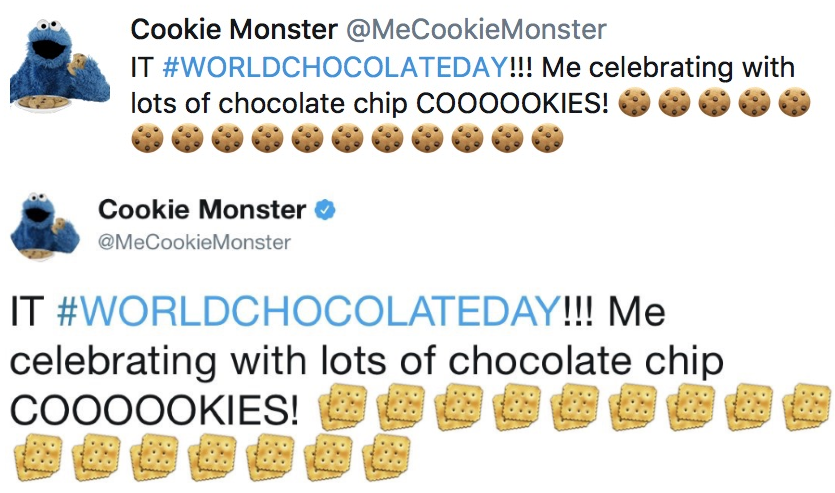
World Emoji Day 📅 might be behind us, but Unbabel’s recent LinkedIn poll reveals that for many professionals across a broad range of industries, including software, tech, retail, telecommunications, and financial services, every day can be Emoji Day.
When asked if emojis are appropriate to use in business communications, 41% of LinkedIn respondents stated that they find them current and engaging. Their main proponents: People working in Marketing, with 46.9% embracing rocket ships 🚀, green ticks ✅, thumbs-ups ðŸ‘, and smiley faces 😀, and Customer Support experts, of which 45.8% greenlight the use of emojis in the workplace.
Meanwhile, an additional 53% shared that they believe the use of emojis should be dependent on the industry or target audience. Only 6% felt that emojis aren’t professional and should be avoided in business communications altogether. 🚫
But when it comes to implementing emojis in the customer journey, whether it be part of a customer support ticket or a marketing campaign, more questions arise: Are emojis a universal language? How accepted are they by your customers around the world? And does each digital icon express the same intent and render similar sentiment across all markets and platforms, or is there more meaning to emojis than meets the eye? 👀
Let’s take a look before you 👋,ðŸ‘, or 😀 your customers again.
Using emojis to enhance your customer support: 🙠or �
Studies have shown that 70% of the customer experience is determined by how consumers feel they are being treated. However, connecting with your customers’ emotions can be tricky — especially online, where the non-verbal cues that facilitate face-to-face communication, such as tone of voice and facial expressions, are non-existent.
Emojis (or emoticons, if you’re feeling vintage) can help: Coming in a variety of skin colors, genders, professions, and shapes, they can be the perfect tool to express empathy and humanize online interactions by creating an emotional presence. Even so, before jumping on Emojipedia and unlocking your emoji keyboard to pepper your next support email or live chat with the most popular emojis you can find, there are some elements you should consider:
• Striking the perfect tone 🙂😊😃
What kind of register do you adopt in your communications with customers, and which emojis, if any, would pair well with it? Much like with specific brand terms, offering your agents glossaries, templates, or guidelines they can refer to will enable them to pick the appropriate emojis in every circumstance while staying true to the company’s image.
• Choosing the right channels 📱💻
With customers turning to social media more and more to reach out to customer support, implementing the use of emojis in your everyday customer service interactions has never been easier — but not every channel is as emoji-friendly as Facebook Messenger, Twitter, or Instagram. When adopting emojis as part of your customer support strategy, keep in mind that they might not work as seamlessly in an email or a text message as they would via WhatsApp.
On top of that, due to licensing issues, emojis render differently across different apps or mobile devices, such as on iPhones and iOs VS smartphones and Android — a hard lesson to learn, that not even the Cookie Monster emerged unscathed from in his #WorldChocolateDay campaign: When attempting to share the cookie emoji 🪠on Twitter, he found that on Samsung screens his tweet was plagued by a row of saltine crackers instead. If you want to avoid a similar salty surprise, check for cross-platform compatibility.

• Knowing your target audience 🎯
Since you’re trying to establish genuine relations with your customers, you should ensure that you know your target audience well: Different age cohorts use emojis differently, and older generations could find them less appropriate or accessible than Millennials and Gen Zs. For instance, Nulab discovered that 30% of Japanese people in their 50s consider emojis inappropriate in business. Analyzing their communication patterns and mirroring them is your best bet to build commonality and rapport: Do they use emojis or emoticons in their day-to-day life? Did they include any in their original support query? Take your cues from them.
• Localizing emojis for your markets ðŸŒ
If you want your customers to react to your emoji game with heart eyes, demographics won’t be the only differentiator you’ll need to factor in. How emojis impact your customers will also depend on their cultural background. For example, you could think that the open palm emoji ðŸ–ï¸ represents a high-five or an innocuous raised hand, but in Pakistan, it would be interpreted as swearing at your reader. And if you’re tempted to use the angel emoji 😇 while chatting with your Chinese customers, think twice: In China, it’s actually seen as an omen of death and could be perceived as a threat. To avoid unpleasant misinterpretations, localization is key.
Using emojis to spruce up your marketing strategy: 👎 or �
Global companies like Disney, Pepsi, and Domino’s Pizza have been leveraging emojis to glow up their marketing strategy for years — and it’s easy to see why. Over time, customers have become more receptive to marketing campaigns that incorporate emojis, and a well-placed smiley face on your social media channels can work wonders to drive engagement.
Used in tweets, emojis can boost engagement by over 25%, while in a Facebook post they can help you rack up 57% more likes and as much as 33% more shares and comments. As for leveraging social media posts to advertise a product or service, emojis can stop your target audience from scrolling past your Facebook ads and increase conversion rates by up to 50%.
Even email marketing seems to benefit from using emojis in the subject line, as it helps create a sense of urgency and relatability. Once again, however, make sure you are selecting the appropriate emojis for your target audience and localizing them to resonate with individual markets.
Data gathered on digital marketing by Mailjet uncovers that, while American recipients are 43% more likely to click on an email if the subject line is embellished with the right emoji, open rates remain unchanged when using emojis to appeal to a Spanish audience — and they actually take an average hit of -11% among French readers. Finally, Brits seem especially receptive to the crying with tears of joy 😂 emoji: When used in an email subject line aimed at a UK audience, it can boost open rates by a whopping 97%.
A/B testing your email subject lines can help you read and ride these trends: As Ooni Pizza Oven’s experience proved, a data-driven approach to localization — even of emojis — is your best bet to discover what works for each market and drive engagement and click-through rates.
After all, adapting marketing content across multiple cultural frameworks and different demographics is a delicate matter. When done right, marketing content can put a smile on your customers’ faces; when done poorly, on the other hand, it can be immortalized in their memories for all the wrong reasons. Ask a well-known car manufacturer (naming them would be a spoiler, sorry!): In 2016, they launched a press release written entirely with emojis, and while the idea was novel, it essentially required an emoji Rosetta Stone to be deciphered. To this day, it’s still making the rounds as a prime example of how not to use emojis in your marketing campaigns.
What about your use of emojis? Is your emoji game optimized for a global customer experience, or does it struggle to leave customers starry-eyed?
Find out whether your emoji strategy is boosting your international CX or needs some additional TLC with our “Is Your Brand’s Global Emoji Game CX-Optimized?” assessment.












